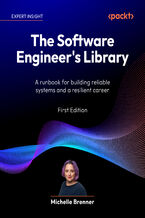
EJB 3.0 Database Persistence with Oracle Fusion Middleware 11g. This book walks you through the practical usage of EJB 3.0 database persistence with Oracle Fusion Middleware. Lots of examples and a step-by-step approach make it a great way for EJB application developers to acquire new skills Deepak Vohra, Deepak Vohra




- Autorzy:
- Deepak Vohra, Deepak Vohra
- Wydawnictwo:
- Packt Publishing
- Ocena:
- Stron:
- 448
- Dostępne formaty:
-
PDFePubMobi
 opcje wysyłki »
opcje wysyłki »
Opis
książki
:
EJB 3.0 Database Persistence with Oracle Fusion Middleware 11g. This book walks you through the practical usage of EJB 3.0 database persistence with Oracle Fusion Middleware. Lots of examples and a step-by-step approach make it a great way for EJB application developers to acquire new skills
Wybrane bestsellery
Packt Publishing - inne książki
Dzięki opcji "Druk na żądanie" do sprzedaży wracają tytuły Grupy Helion, które cieszyły sie dużym zainteresowaniem, a których nakład został wyprzedany.
Dla naszych Czytelników wydrukowaliśmy dodatkową pulę egzemplarzy w technice druku cyfrowego.
Co powinieneś wiedzieć o usłudze "Druk na żądanie":
- usługa obejmuje tylko widoczną poniżej listę tytułów, którą na bieżąco aktualizujemy;
- cena książki może być wyższa od początkowej ceny detalicznej, co jest spowodowane kosztami druku cyfrowego (wyższymi niż koszty tradycyjnego druku offsetowego). Obowiązująca cena jest zawsze podawana na stronie WWW książki;
- zawartość książki wraz z dodatkami (płyta CD, DVD) odpowiada jej pierwotnemu wydaniu i jest w pełni komplementarna;
- usługa nie obejmuje książek w kolorze.
Masz pytanie o konkretny tytuł? Napisz do nas: sklep@helion.pl
Książka drukowana



































Oceny i opinie klientów: EJB 3.0 Database Persistence with Oracle Fusion Middleware 11g. This book walks you through the practical usage of EJB 3.0 database persistence with Oracle Fusion Middleware. Lots of examples and a step-by-step approach make it a great way for EJB application developers to acquire new skills Deepak Vohra, Deepak Vohra
(0)